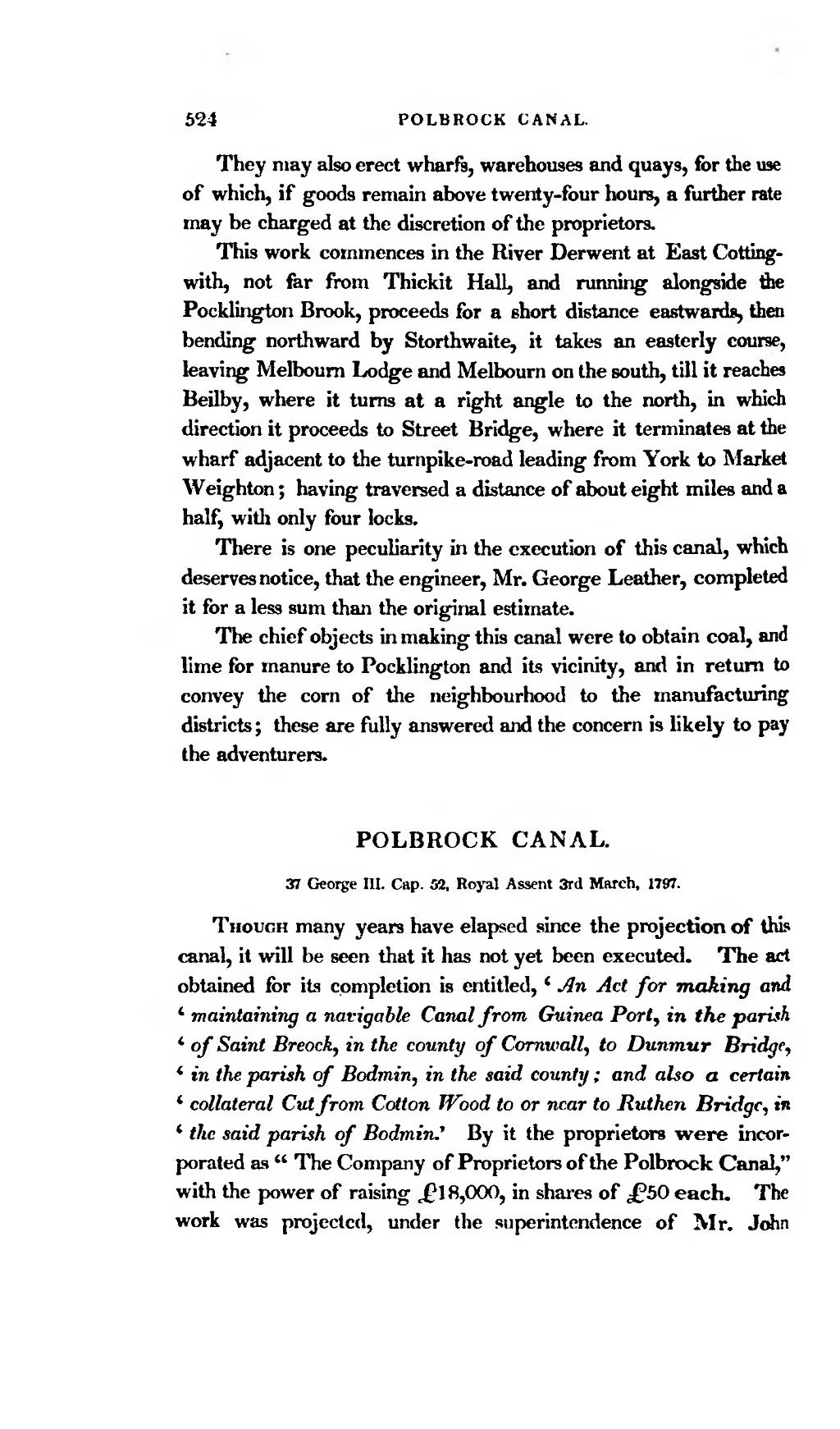They may also erect wharfs, warehouses and quays, for the use of which, if goods remain above twenty-four hours, a further rate may be charged at the discretion of the proprietors.
This work commences in the River Derwent at East Cottingwith, not far from Thickit Hall, and running alongside the Pocklington Brook, proceeds for a short distance eastwards, then bending northward by Storthwaite, it takes an easterly course, leaving Melbourn Lodge and Melbourn on the south, till it reaches Beilby, where it turns at a right angle to the north, in which direction it proceeds to Street Bridge, where it terminates at the wharf adjacent to the turnpike-road leading from York to Market Weighton; having traversed a distance of about eight miles and a half, with only four locks.
There is one peculiarity in the execution of this canal, which deserves notice, that the engineer, Mr. George Leather, completed it for a less sum than the original estimate.
The chief objects in making this canal were to obtain coal, and lime for manure to Pocklington and its vicinity, and in return to convey the corn of the neighbourhood to the manufacturing districts; these are fully answered and the concern is likely to pay the adventurers.
POLBROCK CANAL.
37 George III. Cap. 52, Royal Assent 3rd March, 1797.
THOUGH many years have elapsed since the projection of this canal, it will be seen that it has not yet been executed. The act obtained for its completion is entitled, 'An Act for making and maintaining a navigable Canal from Guinea Port, in time parish of Saint Breock, in the county of Cornwall, to Dunmur Bridge, in the parish of Bodmin, in the said county; and also a certain collateral Cut from Cotton Wood to or near to Ruthen Bridge, in the said parish of Bodmin.' By it the proprietors were incorporated as" The Company of Proprietors of the Polbrock Canal," with the power of raising £18,000, in shares of £50 each. The work was projected, under the superintendence of Mr. John
